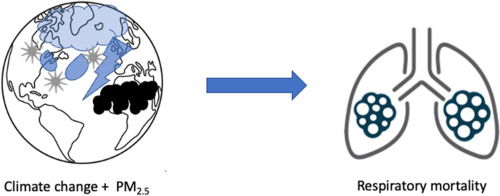Part- 4 The relation of increasing incidence of respiratory diseases to climate change.
The increasing incidence of respiratory diseases is closely related to the ongoing changes in climate. Climate change affects respiratory health both directly and indirectly:
1. Direct Impact: Climate change can directly promote or aggravate respiratory diseases by altering the environmental conditions in which people live.
For example, rising temperatures can increase the levels of outdoor ozone and particulate matter at ground level, which are known to exacerbate conditions like asthma, rhinosinusitis, chronic obstructive pulmonary disease (COPD), and respiratory tract infections.
2. Indirect Impact: Climate change also increases exposure to risk factors for respiratory diseases. It leads to more pollen and allergens produced by plants, mold proliferation, and changes in the intensity and frequency of extreme weather events like heatwaves, droughts, floods, and hurricanes.
These events can have a significant impact on respiratory health, particularly for individuals with pre-existing cardiopulmonary diseases or those who are socioeconomically disadvantaged.
3. Allergic Diseases: Global warming, air pollution, and climate change are contributing to an increased incidence of allergic diseases, such as rhinitis and asthma, especially among vulnerable groups like children and older adults.
4. Viral Respiratory Infections: Abnormal weather patterns due to climate change contribute to shifts in seasonal epidemics of viral respiratory infections (VRIs). Extreme temperatures increase the risk of displacement and food insecurity, making people, particularly in resource-limited regions, more vulnerable to VRIs.
Overall, the relationship between respiratory diseases and climate change is a COMPLEX INTERPLAY of environmental, biological, and social factors that requires comprehensive PUBLIC HEALTH STRATEGIES to address.
Clinical test used to distinguish between influenza and other pathogen.
It is important to distinguish between influenza and other pathogens using Clinical test.
Several pathogens can produce symptoms similar to influenza, including:
– Common Cold: Caused by rhinovirus, adenovirus, human coronavirus, and others, presenting with sore throat, congestion, and gradual symptom onset.
– Strep Throat: Bacterial infection with symptoms like sore throat, fever, and swollen lymph nodes, but without cough or nasal congestion.
– COVID-19: Caused by the SARS-CoV-2 virus, with overlapping symptoms like fever, cough, and fatigue.
– Bacterial Pneumonia: Can mimic flu symptoms but often includes a high fever and productive cough.
– Other Viral Infections: Such as RSV and human metapneumovirus, which cause respiratory symptoms similar to the flu.
To distinguish between influenza and these other pathogens, clinical tests are used:
– Rapid Antigen Detection Tests (RADTs): Provide quick results but have lower sensitivity.
– Reverse Transcriptase Polymerase Chain Reaction (RT-PCR): Highly sensitive and specific, can differentiate between influenza types A and B.
– Viral Culture: Used for confirmation and surveillance during outbreaks.
– Multiplex PCR Tests: Can detect multiple respiratory pathogens from a single sample, helping to differentiate between them efficiently.
These tests are crucial for accurate diagnosis and appropriate treatment, especially during flu season or outbreaks of respiratory illnesses. Consultation with healthcare providers is essential for proper testing and diagnosis.
To be continued.

